The idea for the jet was born in a car. Driving along a German motorway, Sylwia and Rafał Ładzińsski got stuck in a traffic jam and wondered how to avoid such congestion. This was the beginning of the idea that led to the construction of a low-cost aircraft.
The aircraft is intended as an alternative to the car for frequent long-distance travel. It should have a cruising speed of 700 km/h and a range of 2,200 km when fully loaded. It should be easy to fly and can be operated by a single person.
Our aircraft has been developed in response to the need for fast travel. So we designed a fast, light and cheap aircraft. We wanted it to take off almost from home and land at small airports as close to the destination as possible. Because we have the design and engineering background, we were able to develop the ideal aircraft. I am convinced that we have created a means of transport for the 21st century – said Sylwia Ładzińska, co-owner of Metal-Master
The Flaris LAR 1 is a single-engine jet. It is built near Jelenia Góra. It features a futuristic design, ultralight construction and wings that can be removed in five minutes. As a result, it does not require a large hangar and can even be transported on a trailer. The prototype is currently in advanced development. First deliveries to customers are expected after 2015.
The aircraft was presented to the public for the first time at the 50th International Paris Air Show Le Bourget. The stand of Metal-Master, the manufacturer of the Flaris, attracted a great deal of interest. The main designer of the aircraft is Andrzej Frydrychewicz. He is supported by a team of several people associated with Aerodes.
“The advantage of our project is innovation. Flaris LAR 1 is an innovative design on a global scale. There is no such aircraft on the market today” – said at the end of 2014 year, Rafal Ładzinski, co-owner of Metal-Master.
What are innovations of a single engine jet?
Well, the structure is very light and strong. The aircraft started with a take-off weight of only 1,500 kg. This is half the weight of most similar designs. The cabin is car-like and seats five people. The aircraft’s design solutions are protected by eight patents. This low weight, combined with the aircraft’s aerodynamics, is expected to result in low operating costs. According to the manufacturer, fuel costs should be around 1 PLN per kilometre. And airport charges would be the same as for an aircraft in the lightest weight category (up to 2 tonnes).
Unfortunately, those planning to use the aircraft as an air taxi will not be able to do so, as the Flaris has only one engine. Instead, the aircraft can be successfully used for private or corporate transport. The aircraft will also be available for lease.
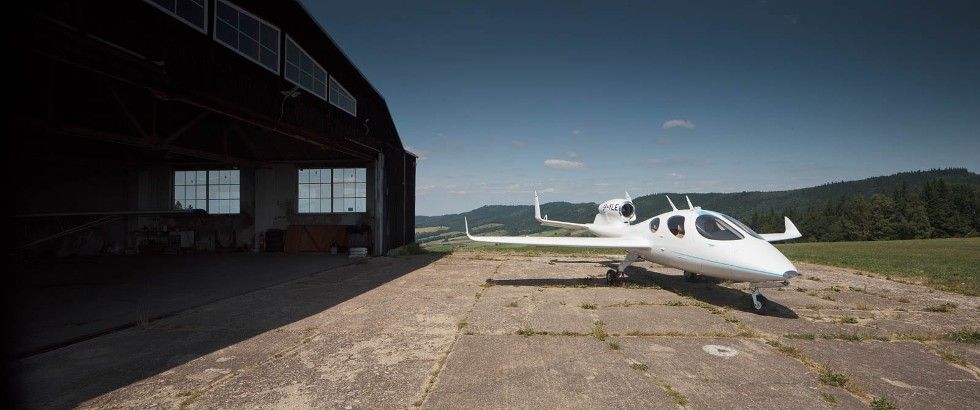
Photo: FLARIS
Let’s talk about the design team
The entire team building the jet are employees of Metal-Master company. The team is headed by Mr Rafał Ładziński – head of the R&D team and director of the Flaris project, as well as co-designer of the aircraft. The team consists of experienced and very young designers, which makes their designs fresh and mature at the same time. Among the designers is Andrzej Frydrychewicz – a legend of the Polish aviation industry.
Among the designers is Andrzej Frydrychewicz – a legend of the Polish aviation industry with 50 years of experience, the author of the Wilga, Raven and Eagle, as well as a number of unrealised projects such as the Harnaś aerobatic plane or the Scorpion combat aircraft.
Jerzy Cisowski, who has been designing ultralight aircraft for 40 years, including the famous B-3 Mirage, is a specialist in carbon composites. The safety of the structures is overseen by Phd Lech Jarzębiński, who has been calculating aircraft structures for more than 40 years and has worked on virtually every aircraft built in Poland during that time.
Engine jet failure? Flaris flies almost like a glider
The safety issue when the only engine in a Flaris stops working is quite significant. What happens if for some reason the engine stops working? The Flaris will then behave almost like a glider. This is because it is extremely light. The aircraft is designed to glide 18 km for every kilometre of altitude loss. It is also small enough to be able to land in adventurous terrain. It also has a state-of-the-art parachute safety system to ensure a soft landing.
Endurance tests on FLARIS LAR 1 aircraft
The endurance tests of the FLARIS LAR 1 aircraft will be completed at the end of February 2015. The research work is being carried out in the laboratory of the Military Technical University in parallel with the testing of the jet’s systems at the airport. These are the last ground tests. The next step is the first flight of the jet.
Two weeks earlier, the FLARIS LAR 1 aircraft was refuelled at the Military Aviation Plant No. 2 in Bydgoszcz. Specialists from FLARIS and Metal-Master will carry out further tests on the aircraft’s systems. The aircraft’s propulsion, fuel, hydraulic and navigation systems will be tested.
A team of test pilots led by pilot Eng. Henryk Szkudlarz, together with a team of WZL2 mechanics, are carrying out final work, including balancing and levelling the aircraft.
– Production will begin next year. The next step, after the flight tests, will be to obtain the necessary certificates,” says Rafał Ładziński, designer and project manager at Flaris.
First flight of the FLARIS LAR1 passenger jet
In early April we learned that the Polish Civil Aviation Authority had given the go-ahead for the Polish Flaris Lar 1 jet to begin flight testing. The aircraft, No. 007 with SP-YLE markings and powered by a WILLIAMS FJ33-5A engine, is taking the next step towards certification.
This is a milestone for private aviation. FLARIS LAR 1 is a Polish and the world’s smallest disposable grass take-off jet.
Following flights of the FLARIS LAR1
At the end of September 2020, the Civil Aviation Office in Poland issued a further permit to continue flight testing and accelerate the aircraft to KCAS speeds of 200 kts. This means that at flight level FL 310 (31000ft=9450m), Flaris will be able to develop speeds in excess of TAS=325 kts (600km/h).
– We are very pleased that Zielona Góra Airport has reopened after a break of several months due to COVID-19 restrictions and that we can now continue with the test flights,” said Rafał Ładziński, Flaris manufacturer.
The tests, which are about to begin, are aimed at collecting the characteristics of the aircraft in a smooth configuration, i.e. with the landing gear retracted. The tests will also determine the aircraft’s performance, including its acceleration, determine its range and confirm its planned attractive economic parameters, such as radically lower fuel consumption and three times lower operating costs compared to other VLJ aircraft.
The target cruise speed of the LAR1 is 0.72 Mach at FL310, TAS= 430kts (800km/h). The design range of the aircraft is in excess of 1,900nm (3,500km).
– If we can confirm the planned performance during the flight tests, including a grass run-up of less than 300 m, FLARIS LAR1 will set new standards for flexible, ultra-fast, economical and environmentally friendly flight profiles,” emphasised Flaris Project Director Rafał Ładziński. – We have already achieved such a run-up from a concrete runway with a full crew over an equally short distance. We expect to repeat this undoubted success,” he added.
FLARIS LAR1 the fastest single-engine jet in the world. Flight test results
FLARIS LAR1 has completed another phase of flight tests. The tests were conducted on a 007 aircraft with a take-off weight of 1700kg. The 30-hour flight test phase included stability and handling tests at a TAS of 470km/h (250kts) at altitudes up to 3050m (10000ft MSL).
During the tests, the aircraft confirmed exceptional performance and technical parameters unattainable by LJ and VLJ class light jets and business turboprops.
The tests have shown:
- The run-up time of the FLARIS LAR1 jet is on average five times shorter than that of LJ and VLJ class aircraft, at only 200m (600ft).
- The aircraft’s climb rate of 1,800m/min (6,000ft/min) is unparalleled in the light business jet class. It is close to the climb speed of training and fighter aircraft. It is half the speed of twin-engine LJ (Light Jet) light jets and three to four times faster than single and twin-engine VLJ (Very Light Jet) aircraft. The price of the former starts at $10 million, while the latter ranges from $2.8 million to $6 million.
- The runway is only 180m (650ft) long. By comparison, LJ/VLJ class aircraft have runways of 600-1100m.
- Sensationally low fuel consumption, less than 120 litres/hr (33 gal/h) at a cruising speed of 470 km/h (TAS250 kts). Fuel consumption is three times less than VLJ class jets and 50% less than single engine business turboprops.

Photo: FLARIS
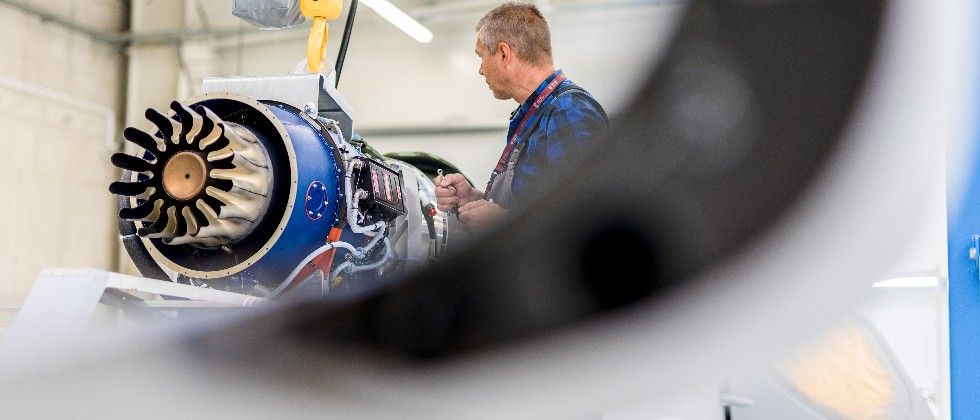
Photo: FLARIS
Flaris 007 tests – a harbinger of greater possibilities
Further testing of the Flaris Lar 1 single-engine mission aircraft has confirmed the assumptions made. The 007 aircraft was used to perform functional tests of the aircraft’s subsystems: the Garmin G600 radio navigation system, the FFAS® flight computer, the hydraulic landing gear release and retraction system, the landing gear hatch closing and opening systems, and the parachute escape system hatch.
During the tests, both the airframe and engine of the LAR1 aircraft, a Williams FJ33-5A, performed flawlessly. The engine has already performed reliably for more than 100 hours in a variety of conditions.
– We are proud of the progress of the tests and this is not the end of our capabilities,” said Rafal Ladzinski. – FLARIS LAR1 is already meeting our objectives. It will carry 4 people 2,500 km in less than 3.5 hours.
Flaris joins forces with EDGE to turn jetliner into unmanned aerial vehicle
The makers of the Polish Flaris Lar 1 jet are constantly developing their aircraft, with the aim of continually improving its features and increasing its capabilities. To achieve these goals, the company has sold a 50% stake to the United Arab Emirates-based EDGE Group, which specialises in high-tech investments.
In November 2023, the two companies will form a joint venture that will enable the transformation of manned aircraft into unmanned systems and the introduction of innovative commercial technologies into the defence industry. This is an important step in the development of Flaris Lar 1.
EDGE Group is one of the world’s leading advanced technology and defence companies. Combined with the company’s expertise in precision aerospace engineering, this makes Flaris a strategic partner in the development of the aircraft.
At the Dubai Airshow 2023 (13-17 November), representatives from both companies will present innovative solutions, including the transformation of the manned Flaris aircraft into an unmanned model. Autonomous technologies will be used to adapt the aircraft to the dynamic requirements of modern defence.
Rafal Ladzinski, CEO of Flaris, said:
“Joining forces with EDGE is a milestone for Flaris and underlines our shared commitment to engineering excellence and innovation. Their planned developments, particularly in the areas of autonomous flight and advanced engine technology, are perfectly in line with our mission to push the boundaries of personal jet capabilities. Our combined expertise will undoubtedly pave the way for further advances in the aviation industry.
Mansour AlMulla, Managing Director and CEO of EDGE Group, said:
“Incorporating Flaris’ engineering capabilities and a wide range of aircraft into our ecosystem is a strategic move for EDGE, marking our expansion into jet engine manufacturing and advanced aerospace technologies, and adding significant value to our advanced technology portfolio. We are excited about the opportunities presented by this strategic investment and joint venture, particularly in transforming current aviation technologies into unmanned systems.
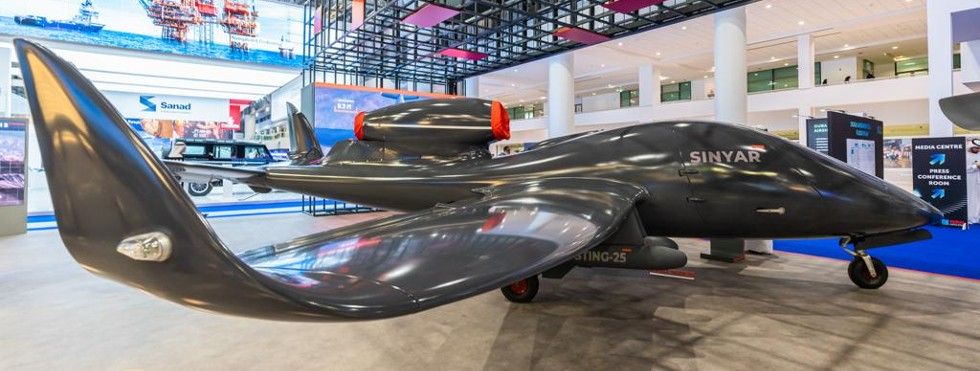
Sinyar/ Photo: FLARIS
FLARIS begins sales of LAR1 aircraft
FLARIS, founded by Sylwia and Rafal Ladzinski, announced in a press release that it has successfully completed the next stage of flight testing and can now begin selling its aircraft. The first aircraft have already been delivered to the United Arab Emirates.
The manufacturer is now preparing to sell the aircraft on the European market. These will mainly be the LAR1 OPV and LAR1 CARGO patrol versions.
Together with its partner, the EDGE Group, it is currently working on equipping the aircraft with artificial intelligence and satellite communications systems. These systems are expected to enable FLARIS aircraft to be used for unmanned patrol flights and to prepare them for collision-free flights for modern CARGO transport applications.
The Polish manufacturer is also preparing an offer for the LAR1 OPV and LAR1 CARGO patrol aircraft aimed at the European market. At its Podgórzyn plant, it is developing the LAR1 OPV patrol version, which is equipped with an on-board computer, a recorder, an observation head and a radio communication system that enables the aircraft to cooperate with a ground station within a radius of 250 km.
According to FLARIS, the LAR 1 is the world’s most economical and smallest disposable passenger aircraft. It is a single-engine jet of composite construction. It creates a new category of small disposable jets, ideal for fast travel to any destination.


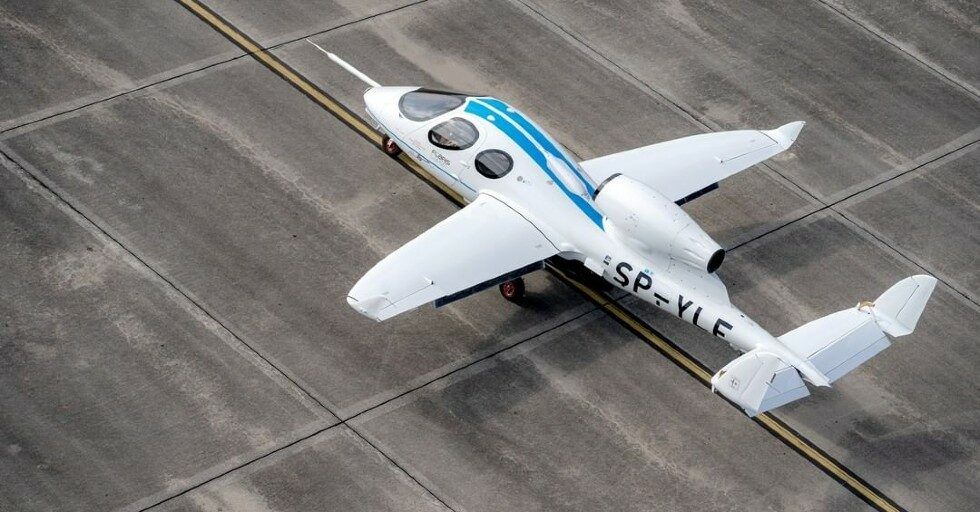

![Will digital twin revolutionize the aerospace and defense sector? [REPORT] Will digital twin revolutionize the aerospace and defense sector? [REPORT]](https://industryinsider.eu/wp-content/uploads/xdigital-twin-in-aerospace-320x167.jpg.pagespeed.ic.K-YNPhggcS.jpg)
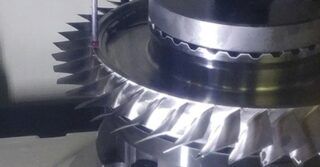

![DevSecOps in the aerospace and defense industry [REPORT] DevSecOps in the aerospace and defense industry [REPORT]](https://industryinsider.eu/wp-content/uploads/xDevSecOps-Survey-Report--320x167.jpg.pagespeed.ic.VZsN61fGqX.jpg)
